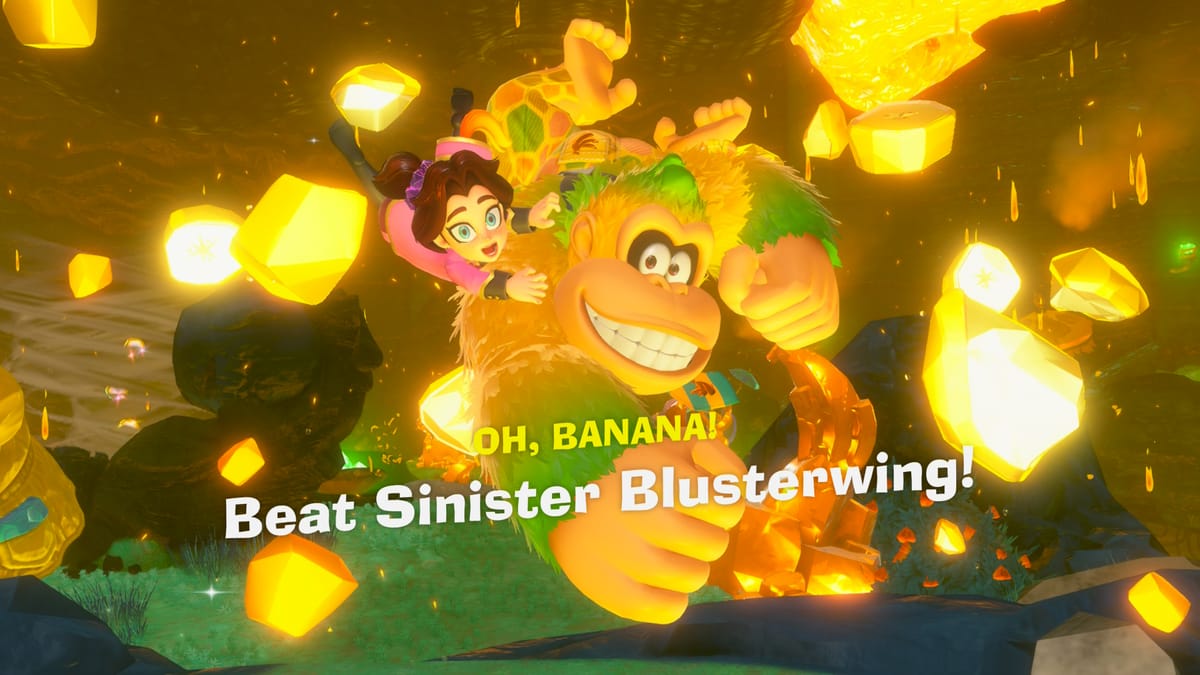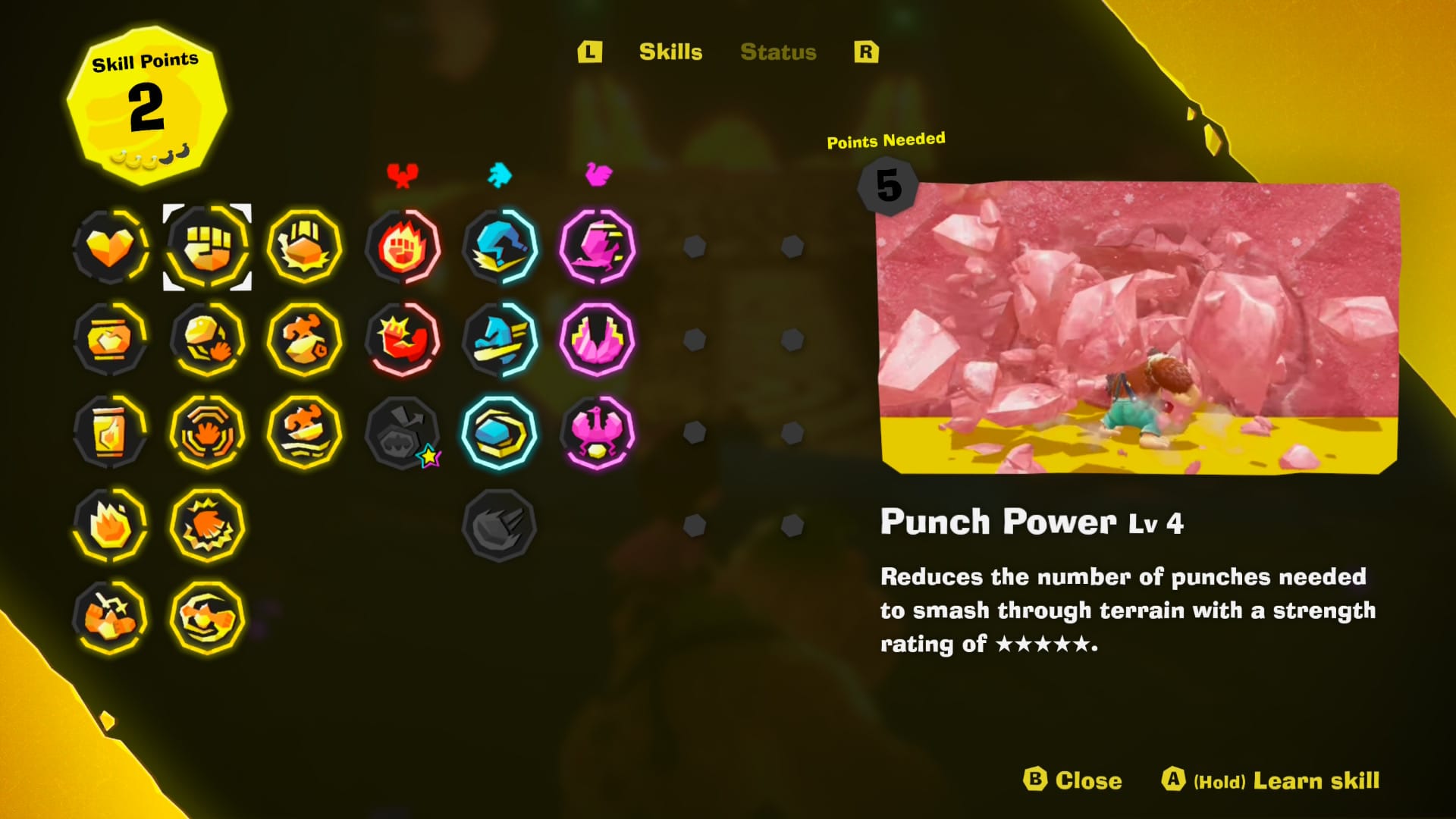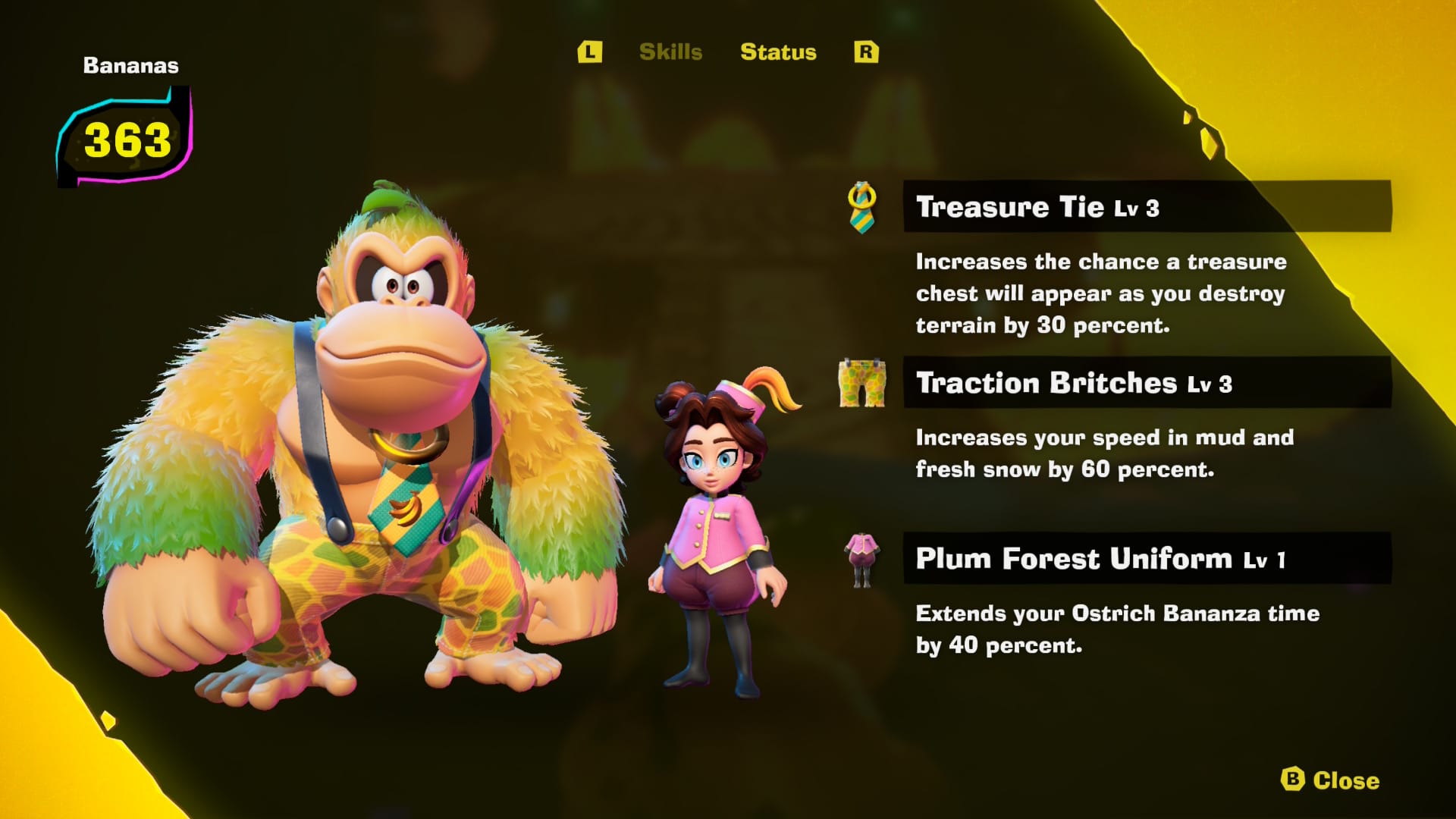Donkey Kong Bananza Review

Donkey Kong Bananza is the best Donkey Kong in a very long time and a strong contender to be one of the best games Nintendo has ever made. The game has been built to provide a pathway to a fun experience for just about anyone. It’s approachable for younger or more casual players while being packed with challenges and collectables to keep just about anyone happy. While Mario Kart made sense as a launch title, Donkey Kong Bananza is good enough on its own to justify the console purchase.
At its core (pun intended) Donkey Kong Bananza is a 3D platformer. Players move through levels to collect bananas, beat enemies and make your way to the next level. What sets the game apart is that unlike a traditional platformer, the vast majority of the level is destructible.
Walls, floors and platforms can be broken through, picked up, thrown and rearranged. Every piece of terrain you’ve punched, thrown or moved around stays that way while remaining on that stage. Players can reset the environment from the menu or by revisiting the stage later.
This destruction gives the game a new canvas to work with. Platformers traditionally have very intentionally placed and spaced environments designed to challenge players with their traversal. When you can punch your way through a mountain, hiding an entrance to a cave loses its meaning.
While the game does have some non-destructible terrain it is only a small fraction. This means that the designers of DK Bananza had to build a platforming experience that accounted for the ability to smash your way through the floor. The game knows players can destroy things and has built platforming around that in a way that truly compliments the destruction system.
In some cases there are bananas hidden behind indestructible terrain, forcing you to find the right way to get to them. Similarly, there are a few bananas that you’ll stumble upon while smashing through mountains that were clearly designed to be found some other way. Those are the minority. Across the nearly 800 bananas waiting to be collected, most are hidden behind just enough of a challenge that heading “Oooh, Banana” for the hundredth time feel like an achievement.
Some bananas are in the overworld, leaning on its terrain or unique gimmicks to make accessing them a challenge. Others are found in small isolated scenarios accessed via the main level. These might be a timed room full of enemies or a unique use of the current layer’s terrain in the form of a puzzle. As you move further through the game, more of the bananas become harder to find and access, ramping up the challenge for those looking for more while keeping enough bananas close to the golden path that you never feel like you need to grind to progress through the main story.
Stages in DK Bananza are called layers. To keep the summary of the story spoiler free I’ll keep it simple. Your goal is to move through each of the layers towards the core of the planet. Each layer is its own, isolated design full of unique systems and NPCs. Players can move back to any layers they’ve previously visited quite easily allowing them to move on with the story without worrying about leaving each layer 100% completed.
Early layers help introduce the player to the terrain system and basic controls of the game. The design of those layers is simple and more linear which helps when getting used to moving through walls and the floor rather than along a preset pathway.
Later layers start to introduce their own unique mechanics. This might be icy terrain that causes you to slide as you run on it or rainbow colored rocks that jet you into the sky when picked up. Challenges in a layer do a great job of utilizing these mechanics and teaching you about them without feeling like you’re stuck in a tutorial.
Across the layers there are NPCs. Some provide a shop interface or similar but most are there to bring a little life to the layer. Not a whole lot of the game happens via dialog other than the occasional cut scene. DK Bananza is about exploration and leaning into the fun of breaking the world apart and the lack of forced dialog helps to keep that experience running.

While players can skip most of the bananas in the game, they do provide skill points used to unlock and improve DKs abilities. Some of these are nice-to-have upgrades like holding more consumables while others provide things like doing more damage to terrain which would be difficult to skip at deeper layers when terrain becomes more difficult to break apart.
The skill points also add new moves and perks to DK’s various Bananza states. These are unlocked as you progress through the story and let DK turn into one of five different animals, each with their own skills and powers.
Both of the skill point system and the bananza modes bring some extra flavor to the game. Some challenges, especially when you’re on a layer with a bananza unlock, require you to be in a certain bananza mode but for the most part you’re free to switch between them as you see fit.
While these modes unlock things like flying, none of them feel overpowered enough to take away from the fun. Each transformation, as well as the skills they have are limited just enough to keep things in check. Again, the game feels like it has been very delicately balanced to provide something fun in amongst a set of systems that could easily turn a less polished game into a boring mess.
These days, well balanced games are few and far between. So much so that during the first half of my playthrough I’d convinced myself that I had to sweep each level for all the bananas and fossils before moving forward.
Somewhere around half way I gave up playing that way. I realised that this wasn’t a game I needed to blast through and put away forever. If I wanted to come back and collect things I could. That process might happen over month of casually playing for half an hours, it might happen in a second pass of all the levels.
Ultimately though Bananza is a game that is there to maximise fun. There’s no grind unless you want one. You can blast through levels as fast as possible or run around and find all the secrets. Either way there’s a path there that is engaging and fun.

Donkey Kong Bananza was made by some subset of the team that made Super Mario Odyssey for the switch. You can somewhat feel that as you play and I think the time they spent building Odyssey helped shape Bananza in a positive way.
That’s not to say that the games feel similar but the same careful planning of environments, challenges and balance are present here as well.
Looking back it’s been a long time since we’ve had a proper 3D Donkey Kong game. Tropical freeze was a good game but it was side scrolling Donkey Kong for a modern system. The last 3D platforming Donkey Kong was Donkey Kong 64 almost 25 years ago. It’s nice to have a DK game back in this format and lets hope it’s not another 25 years before the next one.